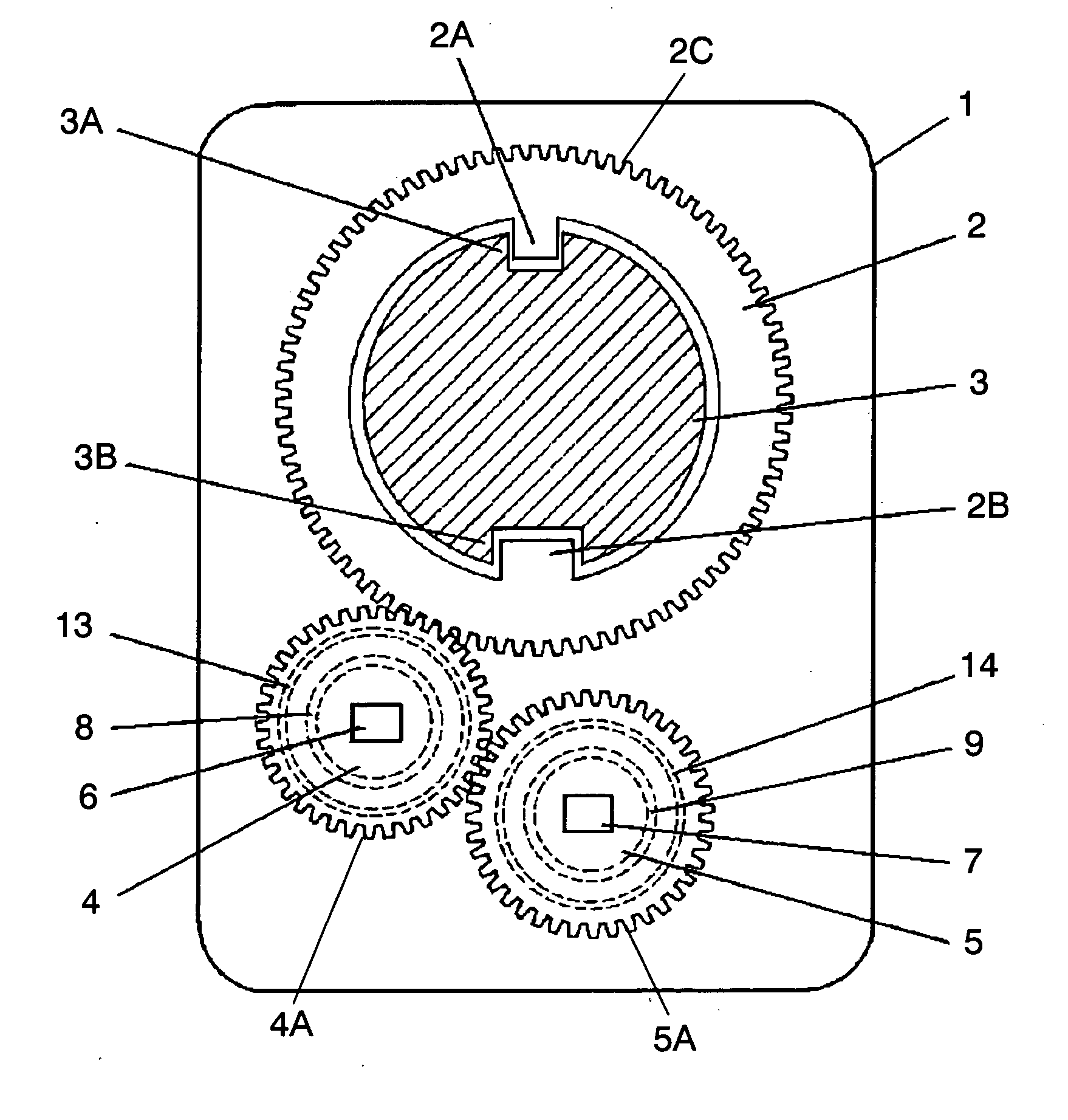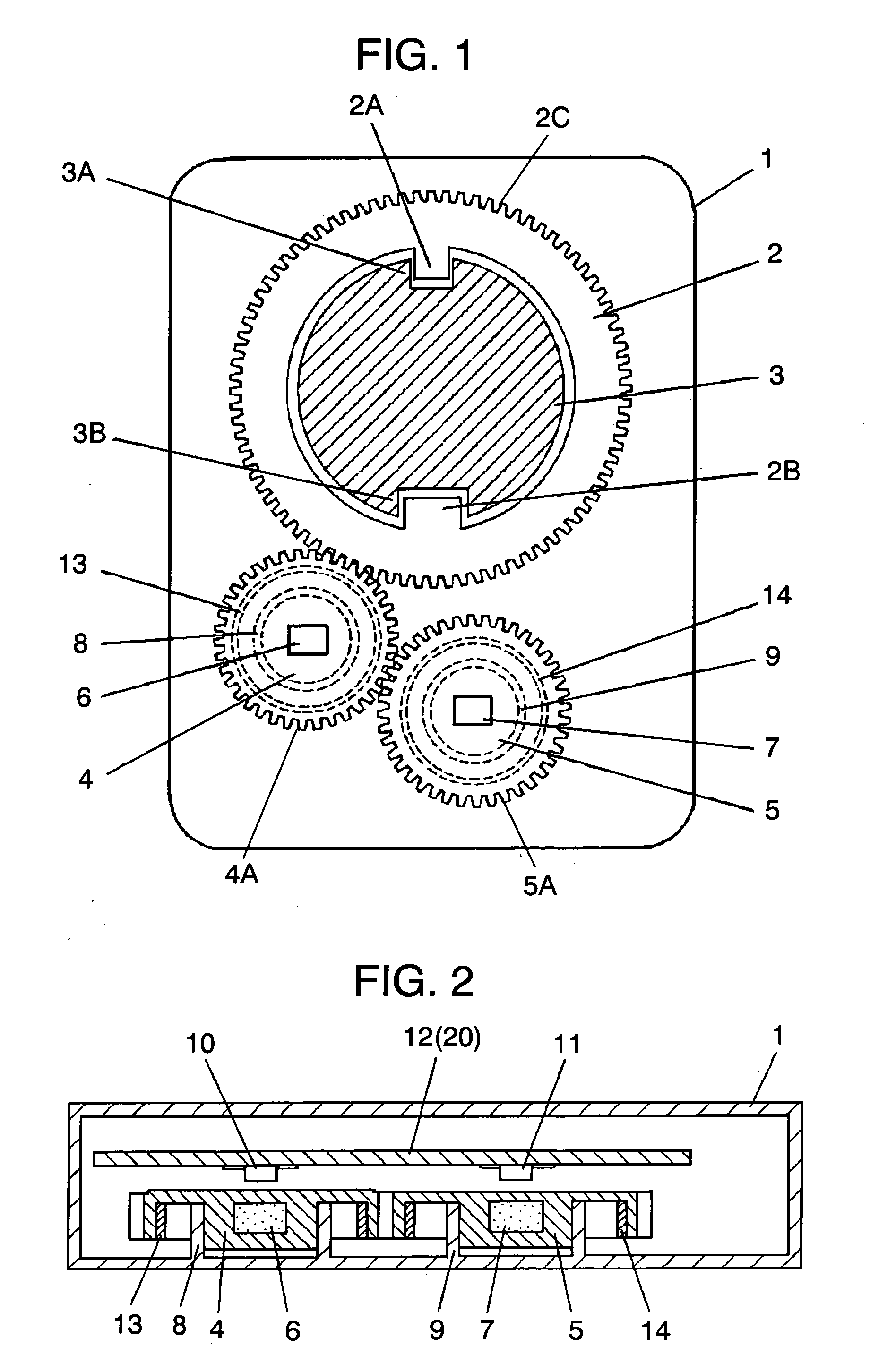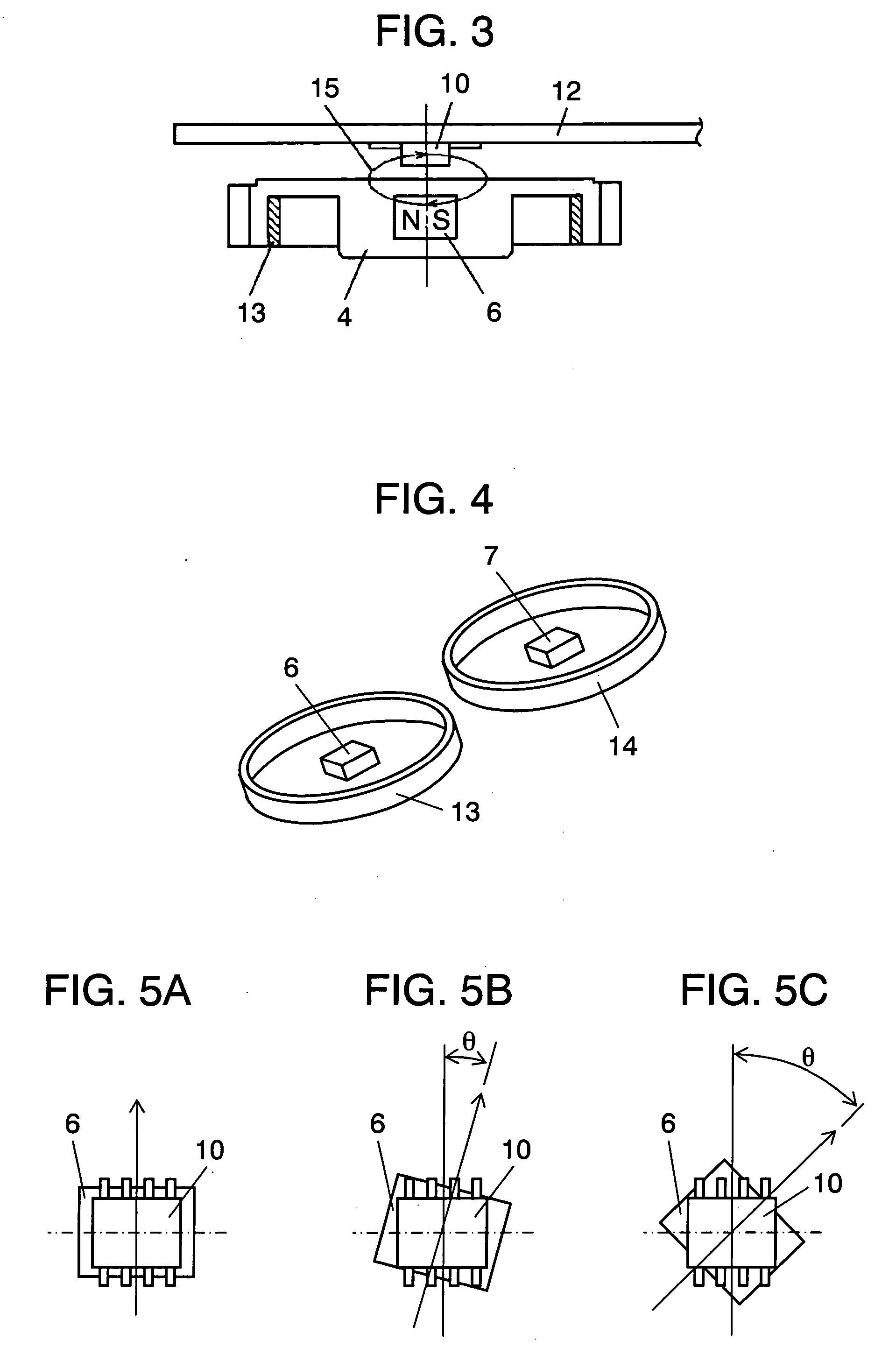Rotation angle-detecting device
- Summary
- Abstract
- Description
- Claims
- Application Information
AI Technical Summary
Benefits of technology
Problems solved by technology
Method used
Image
Examples
Embodiment Construction
[0025]FIG. 1 shows the structure of a rotation angle-detecting device of an exemplary embodiment of the present invention. FIG. 2 is a side sectional view of the rotation angle detecting section of the device. Main rotator 2 has gear 2C on its perimeter. Steering shaft 3 runs through the center of main rotator 2. Projections 2A and 2B of main rotator 2 are fitted in grooves 3A and 3B, respectively, of steering shaft 3. Rotatably fixed around bearing 8, first detecting rotator (hereinafter referred to as rotator) 4 has gear 4A on its perimeter. Gear 4A has a meshing engagement with gear 2C of main rotator 2. Rotator 4 has a diameter smaller than that of main rotator 4, that is, rotator 4 rotates faster than main rotator 2. Similarly, second detecting rotator (hereinafter, rotator) 5 is rotatably fixed around bearing 9. Gear 5A, which is formed on the perimeter of rotator 5, has a meshing engagement with the gear of rotator 4. Rotator 5 has a diameter slightly larger than that of rota...
PUM
 Login to View More
Login to View More Abstract
Description
Claims
Application Information
 Login to View More
Login to View More - R&D
- Intellectual Property
- Life Sciences
- Materials
- Tech Scout
- Unparalleled Data Quality
- Higher Quality Content
- 60% Fewer Hallucinations
Browse by: Latest US Patents, China's latest patents, Technical Efficacy Thesaurus, Application Domain, Technology Topic, Popular Technical Reports.
© 2025 PatSnap. All rights reserved.Legal|Privacy policy|Modern Slavery Act Transparency Statement|Sitemap|About US| Contact US: help@patsnap.com



